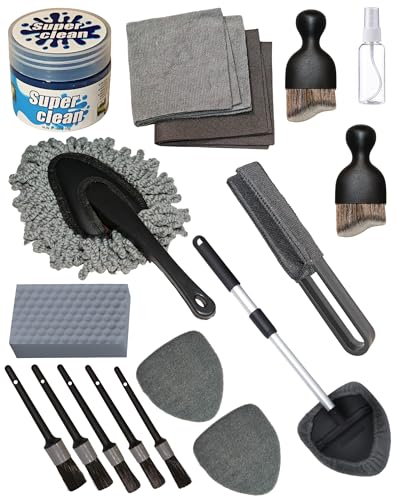Feeling trapped in your car lease and wondering if you can jump ship to a different dealership? You’re not alone. The rules around leasing can feel intentionally confusing, leaving you unsure if you can make a change or if you’re stuck until the term ends. Many drivers believe they are locked in with the original brand, but what if a competitor is offering the perfect vehicle for you right now?
Yes, in most situations, it is possible to trade in a leased car at another dealership. However, this process is not a simple transaction. It is strictly controlled by the terms of your lease agreement and the specific policies of the financial institution that owns your vehicle, known as the leasing company. Successfully navigating this requires understanding a few critical details first.
This definitive guide breaks down the entire process of how you can trade in a leased car at another dealer. We’ll cover the crucial factors that determine your eligibility, provide a step-by-step plan to follow, explore your alternatives if a trade-in isn’t an option, and answer the most common questions you’ll face.
Key Facts
- Your Lease Agreement is Final Authority: The ability for another dealership to buy out your lease depends entirely on the terms written in your original contract, specifically clauses about third-party buyouts.
- Some Brands Restrict Buyouts: Certain manufacturers and their financial arms, such as Ford Credit, BMW Financial Services, and Audi Financial, are known to have partial or complete restrictions on allowing a competitor dealership to purchase their leased vehicles.
- Positive Equity is Your Leverage: A trade-in is most financially viable when your car’s current market value is higher than the lease payoff amount. This “positive equity” is the profit a new dealer can use as a credit towards your next car.
- Dealers May Face Higher Buyout Prices: Leasing companies sometimes charge a third-party dealership a higher price to buy the car than the price they offer you, the original lessee. This can complicate the deal.
- The Transaction is With the Bank, Not the Brand: When another dealer buys your lease, they are purchasing the car from the financial institution that owns it, not necessarily from the car’s original brand (like Toyota or Honda), unless restrictions apply.
The Definitive Answer: Can Another Dealership Buy Out Your Lease?
Yes, in many cases, you can trade in a leased car to another dealership. Think of your lease not as a permanent bond to one dealer, but as a long-term rental from a financial institution (the leasing company). Because the bank owns the car, another dealership can often step in and buy the vehicle directly from them, settling your contract in the process. This allows you to use any potential value in the car towards a new vehicle at that new location.

However, this possibility comes with significant caveats. The leasing company—the entity that actually holds the title to your car—sets the rules. Some are open to these transactions, while others explicitly forbid them in the fine print of your lease agreement. This single document is the ultimate source of truth for what you can and cannot do. But before you head to the nearest dealership, what are the critical roadblocks you need to know about?
4 Critical Factors That Determine If You Can Trade In Your Lease
The ability for another dealer to buy out your lease isn’t a simple yes or no. It’s a complex calculation based on your contract, your car’s value, and market dynamics. Understanding these four factors is the key to determining if a lease trade-in is a smart move for you.
- Your Lease Agreement’s “Third-Party Buyout” Clause
This is the most important factor. Your lease contract is the legally binding document that governs your options. You need to find the section on “Lease Termination,” “Buyout Options,” or “End of Lease” to see if it mentions third-party buyout restrictions. Some leasing companies want to keep their vehicles within their own brand network.Note: Some brands like Ford Credit or BMW Financial Services may have complete restrictions on third-party buyouts. Others, like GM Financial or Honda, might only allow the lease to be sold to a dealership within their own brand network. Always verify the policy for
2025, as these rules can change. - Your Vehicle’s Equity (Positive vs. Negative)
Equity is the difference between what your car is worth today and what you still owe on the lease.- Positive Equity: This happens when your car’s current market value is higher than the lease payoff amount (the residual value plus remaining payments and fees). For example, if your payoff is $20,000 but the car is worth $23,000, you have $3,000 in positive equity. This is the money a new dealer can apply toward your next car.
- Negative Equity: This occurs when your car’s market value is lower than the lease payoff. If your payoff is $20,000 but the car is only worth $18,000, you have $2,000 in negative equity. Trading in a lease with negative equity is very difficult, as the new dealer would have to absorb that loss.
- Current Market Conditions
The automotive market fluctuates. During times of high demand and low supply, like the microchip shortages seen in recent years, used car values often soar. This makes it more likely for your leased vehicle to have positive equity. However, it can also make the original dealership less willing to let a competitor buy your car, as they want the vehicle for their own inventory. The Leaseholder’s Buyout Rate for Dealerships
This is a crucial inside detail. Sometimes, a leasing company will quote two different prices to buy the car: one for you (the lessee) and a higher one for a third-party dealership. If the dealer has to pay more, it eats into the potential profit and makes them less likely to proceed with the transaction. This is why it’s critical to get a specific “dealer buyout quote” from your leaseholder.
Pro Tip: Your lease agreement is the ultimate source of truth. Locate the section on ‘Lease Termination’ or ‘Buyout Options’ before making any calls.
How to Trade In a Leased Car to Another Dealer: A 5-Step Guide
If you’ve reviewed the critical factors and believe a trade-in is possible, it’s time to take action. Following this structured process will give you the clarity and information needed to negotiate effectively and make the right decision.
- Review Your Lease Contract Meticulously
Before you do anything else, grab your original lease agreement. Look for any language that explicitly forbids or permits a third-party buyout. If the language is unclear, call the customer service number for your leasing company (e.g., Toyota Financial Services, Ally Bank, etc.) and ask them directly: “Does my lease agreement permit a buyout from a third-party dealership?” Determine Your Car’s Residual Value
Your contract will state the car’s residual value. This is the leasing company’s prediction of what the car would be worth at the end of the lease term. This number is a key part of your buyout calculation.Assess the Vehicle’s Current Market Value
The residual value is just an estimate made years ago. You need to know what your car is worth today. Use online appraisal tools to get a realistic market value. Be honest about your car’s condition, mileage, and features for the most accurate estimate.- Kelley Blue Book (KBB)
- Edmunds
- Get an Official Dealer Buyout Quote from Your Leaseholder
Call your leasing company again. This time, ask for the “dealer buyout quote” or “third-party payoff amount.” It is essential to specify that a dealership will be buying the car, as this amount may be different from your personal buyout price. This quote is usually valid for a short period (e.g., 10-14 days), so the clock is now ticking. Contact Multiple Dealerships with Your Information
With your buyout quote in hand, you can now shop your car around. Contact several dealerships—including those of different brands—and inform them you have a leased vehicle you’d like to trade in. Provide them with the dealer buyout quote and your car’s details. They will perform their own appraisal and tell you what they are willing to offer. If their offer is higher than your buyout quote, you have positive equity to work with.
Quick Fact: A clean car with all service records handy can significantly boost its market value appraisal. Don’t skip this simple step!
When a Trade-In Isn’t an Option: Exploring Your Alternatives
What happens if you discover your leasing company forbids third-party buyouts, or you have negative equity that makes a trade-in impossible? Don’t worry. You still have several other ways to exit your lease. Comparing them is key to finding the best path forward for your situation.
Which of these options best aligns with your financial goals and need for a new vehicle?
| Option | How It Works | Best For… | Potential Costs |
|---|---|---|---|
| Purchase the Vehicle Yourself | You buy the car from the leasing company at your personal buyout price, often by securing a lease buyout loan. You then own the car and can sell or trade it to whomever you want. | Lessees with positive equity whose leaseholder restricts third-party sales, or for those who simply want to keep their car. | Sales tax on the purchase, registration and titling fees, and interest on the buyout loan. |
| Return it to the Original Dealer | At the end of your term, you simply hand the keys back to the dealership you leased from. | Lessees who are near the end of their term, don’t have positive equity, and don’t want the car anymore. | Fees for exceeding mileage limits, charges for excess wear and tear, and a disposition fee. |
| Use a Lease Termination Option | Some lease agreements have a specific “early termination” clause that allows you to end the contract by paying a set amount of fees. | Situations where you must get out of the lease and other options are not viable, though it can be expensive. | An early termination fee plus the difference between your payoff and the car’s current value (if negative). |
| Transfer the Lease | If your leasing company permits it, you can find someone to take over the remainder of your lease payments and terms. | Lessees with negative equity who want to avoid termination penalties. It’s often a low-cost way to exit a lease. | A lease transfer fee paid to the leasing company. You may also need to offer a cash incentive to the new lessee. |
To ensure your vehicle looks its absolute best and fetches the highest possible appraisal value from a dealership, having the right supplies is essential. A top-quality cleaning kit can make a significant difference in presentation.
FAQs About Trading In a Leased Car
Navigating the complexities of a lease trade-in often brings up specific questions. Here are clear, direct answers to some of the most common concerns.
What is the penalty for trading in a lease early?
The “penalty” usually applies if you have negative equity. In this case, the cost to exit the lease is rolled into your new car loan or paid out of pocket. If you have positive equity, there is no penalty; instead, you get a credit. However, if you terminate the lease without a trade-in, potential fees can include:
* Being responsible for all remaining lease payments.
* A specific early termination fee as detailed in your contract.
* Fees to cover the dealer’s costs of preparing the car for sale.
Can you trade in a leased car for a financed car?
Absolutely. This is one of the most common reasons to trade in a lease. If your leased vehicle has positive equity, the dealership buying out the lease can apply that amount directly as a trade-in credit or a down payment on your new financed vehicle. This lowers the total amount you need to finance and can result in a lower monthly payment.
Can I trade in my lease to a dealership of a different brand (e.g., Toyota lease to a Subaru dealer)?
Yes, this is often possible. The key thing to remember is that the new dealership (Subaru, in this example) is buying the car from the leasing bank (like Toyota Financial Services), not from the Toyota brand itself. The transaction’s success depends entirely on the leasing bank’s policy. You must confirm that your leasing company doesn’t restrict these cross-brand sales, as some do.
Is it better to swap a lease or end it early with a trade-in?
This depends entirely on your financial situation, specifically your car’s equity. A lease swap (or lease transfer) is generally the most cost-effective way to exit a lease if you have negative equity, as it helps you avoid paying termination penalties. A trade-in is the superior option if you have significant positive equity that you want to cash out or use as a down payment on your next vehicle.
Final Summary: Key Takeaways for Trading Your Leased Car
Successfully trading in a leased car to another dealer is entirely possible, but it demands careful preparation. It’s not a transaction you can walk into unprepared. The power lies in understanding your contract and your vehicle’s financial standing in the current market. By doing your homework, you can transform a potential contractual headache into a savvy financial move.
Here are the most important things to remember:
* The Answer is in Your Contract: Your lease agreement is the single most important document. It dictates whether a third-party buyout is allowed and under what conditions. Read it first.
* Equity Determines Viability: The entire process hinges on having positive equity. You must determine your car’s current market value and compare it to the dealer buyout quote from your leaseholder.
* Always Get a Dealer-Specific Quote: The buyout price for you might be different than for a dealership. Always ask your leasing company for the official “third-party dealer buyout” amount.
* Shop Around for the Best Offer: Once you have your buyout quote, contact multiple dealerships to see who will give you the best trade-in value over and above that quote.
Take these insights and confidently explore your options—starting with a close look at your lease agreement. You now have the knowledge to determine the best path forward for your vehicle and your wallet.
Last update on 2025-10-24 / Affiliate links / Images from Amazon Product Advertising API










![Can You Trade a Car Without a Title? Dealership Guide [year] 18 Can You Trade a Car Without a Title? Dealership Guide [year]](https://carxplorer.com/wp-content/uploads/2025/10/Can-You-Trade-a-Car-Without-a-Title-Dealership-Guide-year-2-60x60.jpg)